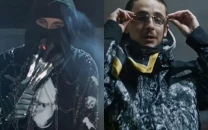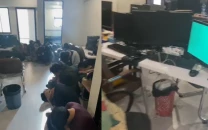Netflix's 'The Summer Hikaru Died' draws praise, despite unease, for horror visuals and emotional depth
Netflix’s 'The Summer Hikaru Died' unsettles audiences with horror visuals and moral ambiguity in its story.

The Summer Hikaru Died has quickly become one of Netflix’s most talked-about summer anime titles, drawing viewer attention for its unsettling imagery and emotional narrative.
The series centres around Yoshiki Tsujinaka, a high school student mourning the loss of his close friend Hikaru, whose body is now inhabited by a supernatural entity known as Nonuki.
What separates this anime from others in its genre, is its experimental use of mixed media. Viewers are frequently presented with real-life images, such as raw chicken or natural scenery, woven into animated sequences.
These elements are used to evoke discomfort and highlight the tension between reality and illusion. The shift from animation to live-action often mirrors Yoshiki’s emotional unease as he grapples with the realisation that the being in front of him, though familiar, is no longer human.
Fans and critics have also noted the romantic subtext between Yoshiki and the possessed Hikaru, adding further complexity to the plot.
Social media reactions suggest that the ambiguous relationship dynamics and blurred boundaries between grief, love and horror contribute to the show’s haunting impact.
In addition to visual discomfort, the anime introduces folk horror through the legend of Nonuki, a malevolent force believed to descend from the mountains.
Viewers have commented online about the moral dilemma faced by Yoshiki: whether to accept a comforting lie or confront an uncomfortable truth.
The Summer Hikaru Died continues to provoke discussion across fan communities, with many noting it as one of the most emotionally layered and visually distinctive series of the season.






1723448779-0/Kit-Harington-(1)1723448779-0-208x130.webp)













COMMENTS
Comments are moderated and generally will be posted if they are on-topic and not abusive.
For more information, please see our Comments FAQ